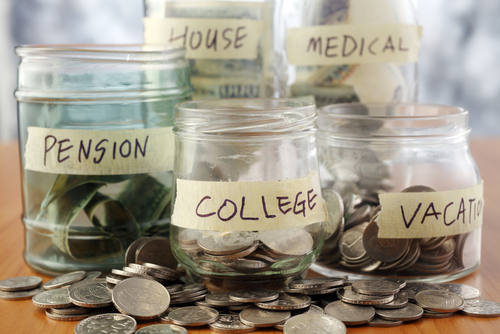Being financially responsible you understand the importance of having an emergency fund. It is a way to store up money in an easily accessible place in order to prevent going into debt when the unexpected hits. In order to make the most of this money many people use high-yield money market or savings accounts. They figure they might as well get the most interest possible. These accounts are often used as emergency money, only touched in the event of an emergency. But some people are not using their savings accounts properly.
The Federal Reserve Board, the government entity that has oversight of the monetary system, has what is called Regulation D. This regulation is basically a limit on the number of withdrawals a person can take from their savings account. It states that in any given month, the maximum number of withdrawals is limited to six; there are some exclusions. Transfers within the institution or withdrawals via ATM do not count against the limit; but pre-authorized monthly withdrawals do.
So with this rule in place people must be careful not to go over the limit. In the event that they do go over, each bank will treat the infraction differently. Some banks have a monetary penalty for each superfluous withdrawal. Other banks will allow the infraction to slide with a warning, but force closure of the account if it happens too many times within a 12 month period. Still other institutions may change the savings account to a non-interest bearing checking account after a pre-determined number of violations. The point is these accounts are savings accounts, not one to be tapped into often.
The reasoning behind Regulation D is actually twofold. The first is that a savings account is designed to function differently than a checking account. The owner should not be accessing the money every 3-4 business days. The Fed understands this and seeks to encourage savers to actually save. The second reason is based on how the Fed monitors banks. With a checking account (an account that is not subject to Regulation D), the bank is required to hold a minimum of 10% of the value at the bank. This is to cover withdrawals as they come up, and they come up regularly. A savings account, on the other hand, does not have that minimum requirement. So if people are tapping into their savings, the bank could potentially run out of cash. By limiting the number of withdrawals, the bank is protected against a sudden loss of cash and potentially not being able to fund requests from customers.
There are some people who get upset at the idea of limiting access to their cash. But the idea is not limiting access; it is limiting the number of times the cash can be accessed. Instead of constantly taking money from savings, Regulation D encourages people to be better managers of their money, and have the foresight that one larger withdrawal will meet their needs just as well as several small withdrawals. If you need constant access to the cash, a checking account is designed just for that.
Have you ever run into problems with Regulation D? How did your bank handle it?
Being financially responsible you understand the importance of having an emergency fund. It is a way to store up money in an easily accessible place in order to prevent going into debt when the unexpected hits. In order to make the most of this money many people use high-yield money market or savings accounts. They figure they might as well get the most interest possible. These accounts are often used as emergency money, only touched in the event of an emergency. But some people are not using their savings accounts properly.
The Federal Reserve Board, the government entity that has oversight of the monetary system, has what is called Regulation D. This regulation is basically a limit on the number of withdrawals a person can take from their savings account. It states that in any given month, the maximum number of withdrawals is limited to six; there are some exclusions. Transfers within the institution or withdrawals via ATM do not count against the limit; but pre-authorized monthly withdrawals do.
So with this rule in place people must be careful not to go over the limit. In the event that they do go over, each bank will treat the infraction differently. Some banks have a monetary penalty for each superfluous withdrawal. Other banks will allow the infraction to slide with a warning, but force closure of the account if it happens too many times within a 12 month period. Still other institutions may change the savings account to a non-interest bearing checking account after a pre-determined number of violations. The point is these accounts are savings accounts, not one to be tapped into often.
The reasoning behind Regulation D is actually twofold. The first is that a savings account is designed to function differently than a checking account. The owner should not be accessing the money every 3-4 business days. The Fed understands this and seeks to encourage savers to actually save. The second reason is based on how the Fed monitors banks. With a checking account (an account that is not subject to Regulation D), the bank is required to hold a minimum of 10% of the value at the bank. This is to cover withdrawals as they come up, and they come up regularly. A savings account, on the other hand, does not have that minimum requirement. So if people are tapping into their savings, the bank could potentially run out of cash. By limiting the number of withdrawals, the bank is protected against a sudden loss of cash and potentially not being able to fund requests from customers.
There are some people who get upset at the idea of limiting access to their cash. But the idea is not limiting access; it is limiting the number of times the cash can be accessed. Instead of constantly taking money from savings, Regulation D encourages people to be better managers of their money, and have the foresight that one larger withdrawal will meet their needs just as well as several small withdrawals. If you need constant access to the cash, a checking account is designed just for that.
Have you ever run into problems with Regulation D? How did your bank handle it?







